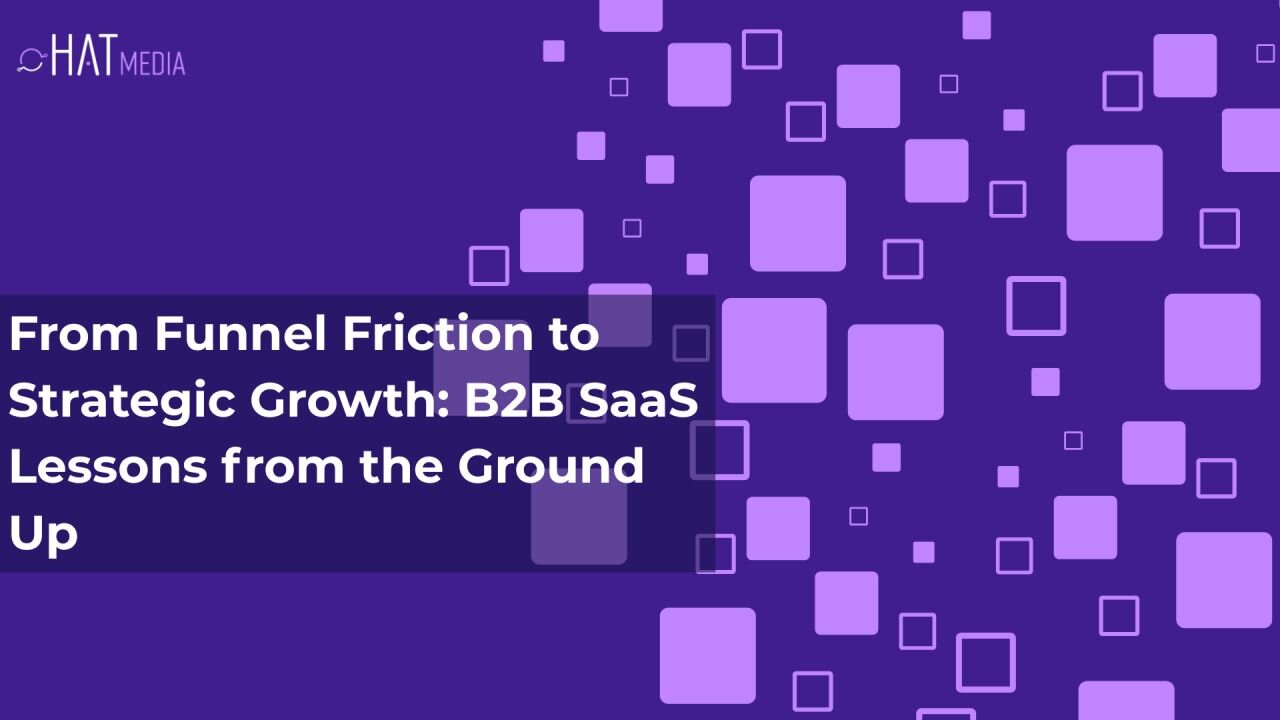Why B2B Organisations Miss Sales Targets (and How to Fix It)

In B2B marketing, hitting sales targets should be a well-oiled machine. But let’s be honest—many businesses are falling short. Why?
As someone who’s passionate about both marketing and psychology, I’ve always believed that the key to sales success lies in truly understanding your audience. It’s not just about selling a product; it’s about knowing who you’re selling to, their pain points, aspirations, and what keeps them awake at night.
These are some of the questions I constantly ask:
- What are your customers’ goals?
- What challenges are they grappling with every day?
- How do they make decisions, and what influences who they trust?
After years of working with businesses across industries, I’ve uncovered two major reasons why organisations—especially in the B2B space—keep missing their sales targets.
1. Sales and Marketing Misalignment: The Root of All B2B Problems
One of the most glaring issues is the disconnect between sales and marketing. Despite sharing the same objectives—revenue growth, customer acquisition, and brand expansion—they often operate in silos, with minimal communication between them.
At many companies, sales and marketing teams feel like they’re playing on opposite sides of the field. I’ve seen it time and again—the classic “us vs. them” mentality, where marketing is from Venus, and sales is from Mars. It’s a huge problem, and B2B marketing services and agencies need to step in to bridge this gap.
The reality is that sales and marketing shouldn’t just co-exist; they need to work hand-in-hand. When these two teams are aligned, that’s when the magic happens. Here’s the proof:
- Revenue Growth: According to the Aberdeen Group, organisations with strong sales and marketing alignment see a 20% increase in annual revenue growth.
- Higher Lead Conversion: Companies that closely align sales and marketing enjoy a 36% higher conversion rate from lead to opportunity (MarketingProfs).
- Sales Productivity: HubSpot reports that when sales and marketing are aligned, productivity increases by 34%.
- Higher ROI: Aligned businesses experience 27% faster profit growth over three years compared to those that aren’t aligned (SiriusDecisions).
- Customer Retention: Organisations with aligned teams see a 36% higher customer retention rate.
- Improved Win Rates: Businesses with aligned sales and marketing enjoy win rates that are 67% higher than those that aren’t aligned.
The numbers speak for themselves. If your business is missing sales targets, it’s time to question whether your sales and marketing teams are truly working together—or just getting in each other’s way.

2. Sales Tactics Stuck in Time While Buyers Move Forward
The second major issue is that while B2B buyers have evolved, many sales tactics have remained stagnant. And this has only been made worse by the Covid-19 pandemic, which forced B2B buyers and sellers to embrace a digital-first world.
Over the past few years, B2B buyers have shifted their preferences, becoming more digitally savvy, self-reliant, and data-driven. They’re using tools like AI to guide their decision-making, leveraging online reviews, and spending far more time doing research before even speaking to a salesperson.
Yet, many sales teams are still relying on outdated tactics, expecting that a few phone calls or a single presentation will close the deal. This isn’t the case anymore. The data shows that:
- Remote Work and Collaboration: The shift to remote work has made digital collaboration tools indispensable. Buyers now expect to engage with vendors via video calls, online demos, and virtual negotiations.
- The Rise of AI: B2B buyers are using AI to analyse data, making decisions based on facts rather than gut feelings. Tools like ChatGPT are helping buyers gain insights from customer reviews and product performance data, making them better informed than ever.
- Digital Dominance: Buyers have moved towards e-commerce platforms and online marketplaces for B2B transactions, with many now purchasing high-ticket items online without ever speaking to a salesperson.
- Supply Chain Resilience: The pandemic exposed the fragility of global supply chains. As a result, buyers are now more risk-conscious and value-driven, placing greater emphasis on local sourcing and supplier reliability.
The key takeaway? B2B buyers have moved forward, and sellers need to catch up. This is where B2B marketing agencies and B2B marketing services come into play.
These agencies are experts in helping businesses adapt to new technologies, leverage AI-driven insights, and create digital-first sales strategies that meet modern buyer expectations.
Real-World Insights: Why Sales Teams Miss Their Targets
I recently had the chance to chat with Martin Garvey, a sales leader at Gong, on the SaaS Stories podcast. Martin shared some hard-hitting truths about why sales teams—especially in the B2B SaaS space—keep missing targets, even when everything seems to be going right.
One major issue? Salespeople are spending up to 70% of their time on non-selling activities. Updating CRMs, writing reports, and preparing for meetings eats up valuable time that could be spent building relationships and closing deals.
But it doesn’t stop there. Martin pointed out that sales win rates increase by 16% when four or more contacts are involved in the deal.
Unfortunately, many sales teams aren’t involving enough decision-makers early in the process. Instead, they focus on one contact, hoping that will seal the deal. But in today’s world of buying committees, that’s just not enough.
“If you’re not multi-threading, you’re not selling,” Martin told me. “Sales cycles drag on when you’re only talking to one person.”
And that’s where many B2B companies can make a huge difference. By using tools like Gong’s revenue intelligence platform, sales teams can reduce non-selling activities, speed up sales cycles, and focus on engaging multiple decision-makers.
How to Shorten Sales Cycles
So, how can businesses stop missing sales targets and close deals faster? Here are some strategies that we’ve used at Hat Media, as well as with our clients:
- In-Depth Buyer Persona Research: Use tools like progressive profiling to understand buyer needs, goals, and pain points. The better you understand your buyer, the faster you can tailor your sales approach.
- Effective Content Marketing: B2B marketing agencies are experts at using content to influence buyers at every stage of the decision-making process. Whitepapers, case studies, and webinars help build trust and speed up conversions.
- Marketing Automation: Automation tools can nurture leads, score prospects, and pass them to sales when they’re ready to buy, reducing the time salespeople spend on manual tasks.
- Build Trust and Relationships: Establishing trust is crucial. Sales reps should act as trusted advisors, providing personalised solutions that address the buyer’s specific concerns.
- Leverage Social Selling: One clever tactic we used for Lenovo’s sales teams was positioning the salespeople, not the execs, as thought leaders. We wrote over 350 articles under their names and cranked up their social presence. This sparked more conversations with buyers who were actively seeking solutions to their specific problems.
In the world of B2B, sales and marketing alignment, adapting to the digital landscape, and understanding modern buyer behaviour are key to hitting your targets. By partnering with B2B marketing agencies that understand these dynamics, businesses can build stronger relationships, close deals faster, and—most importantly—stop missing their sales targets.

